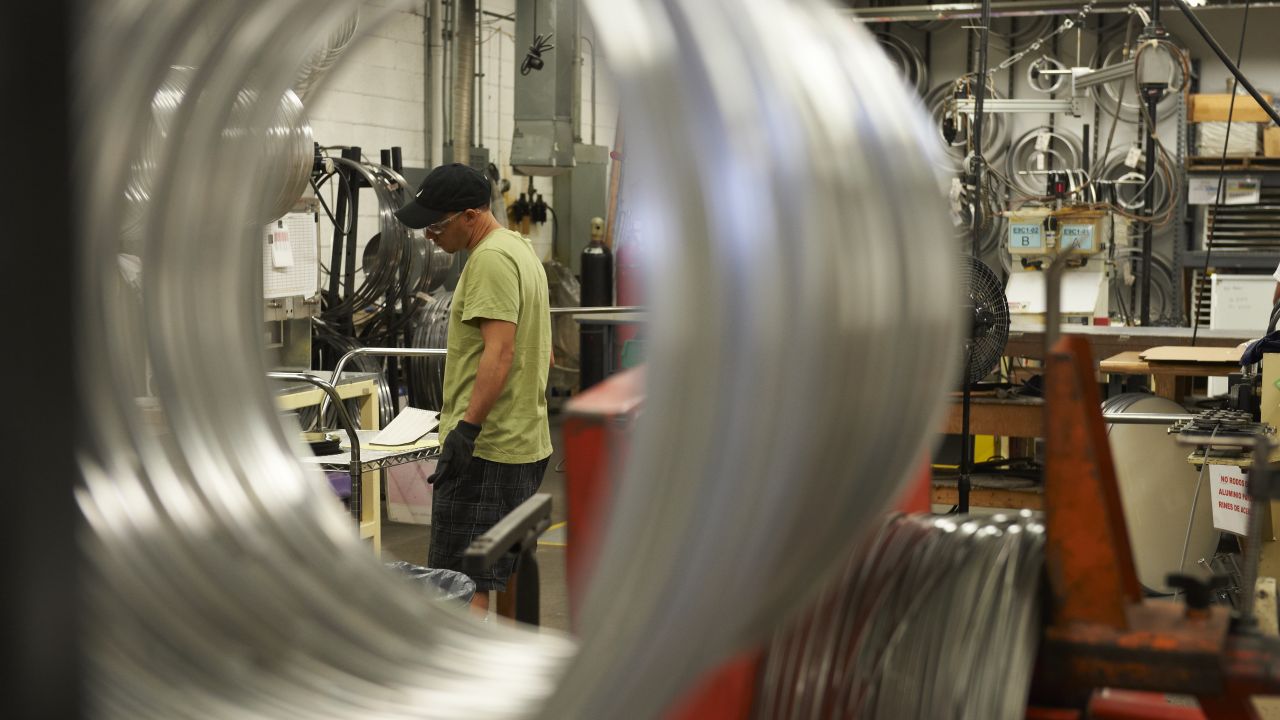
It's not possible to get back the 5 million manufacturing jobs we've lost in the last two decades, writes Dean Baker, but plausible trade-deficit reductions could bring back 1-2 million of them. (Photo by Joby Sessions/Rhythm Magazine via Getty Images)
This post originally appeared at Truth Out.
Shortly after Donald Trump enters the White House, we should get an answer to a key question from his campaign: What does he actually intend to do about trade? Trade was one of his main issues when he campaigned in the key industrial states that he won in November.
Trump argued that past presidents of both parties had failed the country’s workers by signing bad trade deals. He said that the negotiators were “stupid” and that he would instead appoint “smart” negotiators who wouldn’t let Mexico, China and other trading partners beat us at the negotiating table.
Trump is correct in identifying trade as a force that has caused enormous economic damage to millions of people in these states, but he is wrong that the problem was “stupid” negotiators. The vast majority of people who have been given the responsibility for negotiating trade deals are smart, ambitious and hard-working.
The large trade deficits we have been running in the last two decades are not due to negotiators. We run large trade deficits because securing manufacturing jobs in the United States has not been a priority for our negotiators.
When our trade negotiators sit down with Mexico, China and other trading partners, they have a long list of items on their agenda. For example, they want longer and stronger patent protection for our drugs and copyright protection for Microsoft’s software. They also want better market access for our financial, telecommunications and retail industries. Our trade negotiators have been quite successful in these areas.
Furthermore, the trade deficit is not a bad thing for everyone in the United States. Many of the items that we import from Mexico, China and other developing countries were actually produced by US companies. They wanted to take advantage of low-cost labor to get an edge on their domestic competition. Similarly, Walmart and other major retailers are happy to have low-cost suppliers in the developing world.
The US manufacturers that took their operations overseas and the retailers that benefit from low-cost supply chains did not lose from recent trade deals; they got rich. The problem for US workers has not been that our trade negotiators are not smart; the problem is that they have a different agenda.
This raises the question of the agenda that Donald Trump wants to pursue in trade deals. If his goal is first and foremost to regain manufacturing jobs by reducing the size of the trade deficit, then the top priority should be lowering the value of the dollar against the currencies of China and other trading partners.
A lower valued dollar will make US exports cheaper for people living in other countries leading them to buy more of our exports. It will also make imports more expensive for people in the United States. That will cause US consumers to substitute domestically produced items for imports. The net effect would be a smaller trade deficit and more jobs in manufacturing.
While it is not possible to get back the 5 million manufacturing jobs we have lost in the last two decades, plausible reductions in the trade deficit could bring back 1-2 million manufacturing jobs. This would have a noticeable impact on the labor market for workers without college degrees.
However, it is not clear that Trump plans to pursue a trade policy focused on getting back manufacturing jobs. While he railed about currency “manipulation” in the election campaign, he also complained that other countries didn’t grant our companies adequate market access or respect the patents and copyrights of US companies.
These are conflicting agendas, and it remains to be seen whether Trump pursues a trade agenda that will increase manufacturing jobs, or one that will further enrich corporate America. With the top two economic posts in the Trump administration going to Goldman Sachs alums, the money is betting on the corporate agenda.
But that doesn’t mean that US workers will be left entirely out in the cold. After all, Trump did engineer a deal that saved the jobs of 800 Carrier workers in Indiana. This amounts to 0.008 percent of the 12,260,000 manufacturing jobs in the United States. Trump has indicated that he plans to push other deals with individuals companies, which could amount to several thousand more jobs.
In other words, when it comes to the policies that actually determine the jobs and wages of tens of millions of working-class people, Trump will be doing the bidding of the same corporate interests as his predecessors. But he will give us more Carrier-type shows, which should net us a number of jobs that you can count on your fingers.
Copyright, Truthout.org. Reprinted with permission




